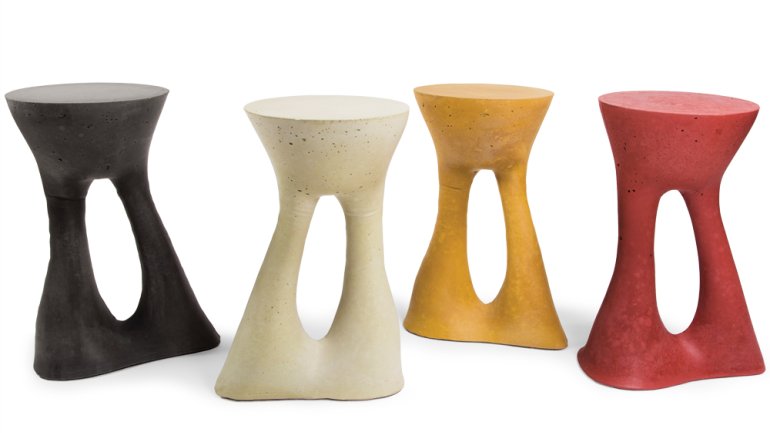Light-Bulb Moment
Light-Bulb Moment
Souda, a young Brooklyn-based design studio, has created a modern lighting pendant of porcelain with a surprising texture: slightly rumpled and slouched.
“Our ceramics are slip-cast in leather,” explains Isaac Friedman-Heiman, a designer and co-founder at Souda (pronounced “soh-duh”). Leather molds allow Souda to hand-produce an assortment of porcelain housewares with relaxed contours. The molds also enable Souda to make a series of distinct forms, with each new creation shaped a little differently from the last. This collection, which also includes vessels, is called Kawa, a Japanese word meaning “skin” or “leather.”
Founded in 2012 by three freshly minted graduates of Parsons The New School for Design, Souda is the product, in part, of the astronomical rents young people confront if they live in New York City. While they were students, designers and co-founders Shaun Kasperbauer and Luft Tanaka squeezed a woodworking shop and ceramics studio into their living room. Friedman-Heiman was experimenting with concrete and other materials in his own small apartment. So the three designers, all in their 20s, went in on a workshop.
They signed the lease on their 1,500-square-foot space in Bushwick a few weeks after graduating. Each intended to continue working independently. “Working together as Souda developed somewhat organically once we had a space together,” says Kasperbauer. “We have different strengths and weaknesses, and it just seemed like a natural fit.”
Tanaka created an early version of the Kawa line for his senior thesis. Another major line for Souda, the Kreten collection of colored concrete accent tables and a candelabra, is derived from Friedman-Heiman’s thesis. Meanwhile, Kasperbauer brings professional design experience, including internships at Poltrona Frau, a high-end Italian leather furniture company, and Roll & Hill, a lighting manufacturer in New York City.
The Souda trio is still striving for a complete collection of furniture and housewares, but they’ve already managed to carve out a niche. “Souda is unique,” says Kasperbauer, “in that we focus on both handmade and industrially produced objects that span a number of materials and a few different scales.”
This means pieces such as Souda’s popular Strut shelving system come to life the way most products do – they’re outsourced to manufacturers, all of them American so far. The Manhattan Bridge-inspired steel brackets (for mounting the shelves to the wall) come from a manufacturer in Indiana, the wooden planks from upstate New York.
Product lines like Kawa and Kreten rely on a less common formula. Like the Kawa lighting pendant, each piece in the Kreten collection is fabricated in-house using a soft mold, allowing for infinite variations. The concrete takes shape inside fabric molds, “kind of like spandex,” explains Friedman-Heiman. “They’re fit into an armature and, once concrete is poured inside, they sort of swell with the weight and the elasticity of the materials.” The resulting pieces have fat, sturdy bases and playfully outstretched limbs, like the characters in a Keith Haring painting.
Projects like Kawa and Kreten best express the spirit of Souda. The company name is another Japanese word, an approximation of “That’s it!” – as in a revelation or a light-bulb moment. “We’re figuring out unique methods of production which allow for one-of-a-kind objects each time,” says Friedman-Heiman. “We’re finding unique processes which lend character to the objects.”
Christy DeSmith is a Minneapolis-based freelance writer.

